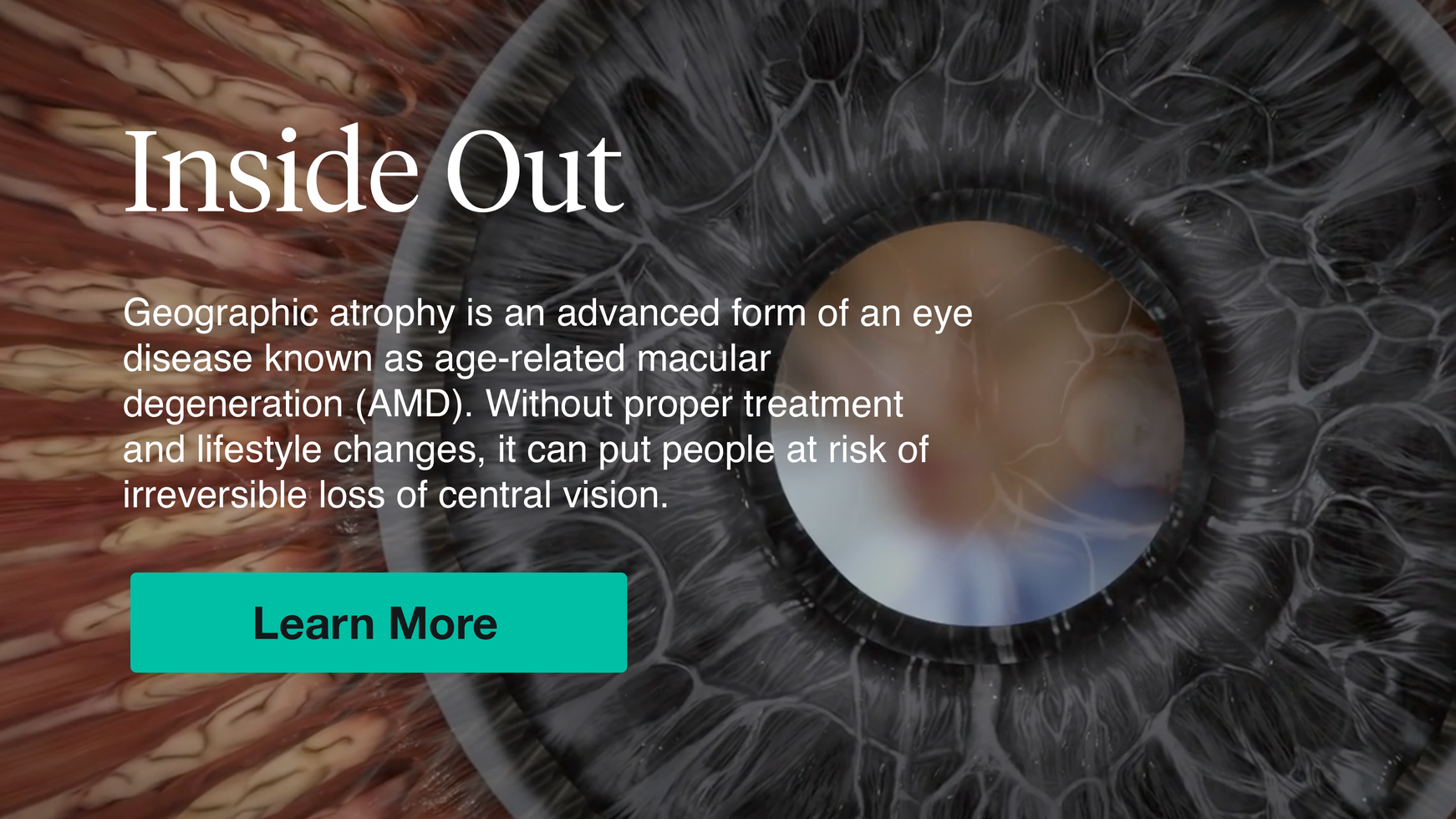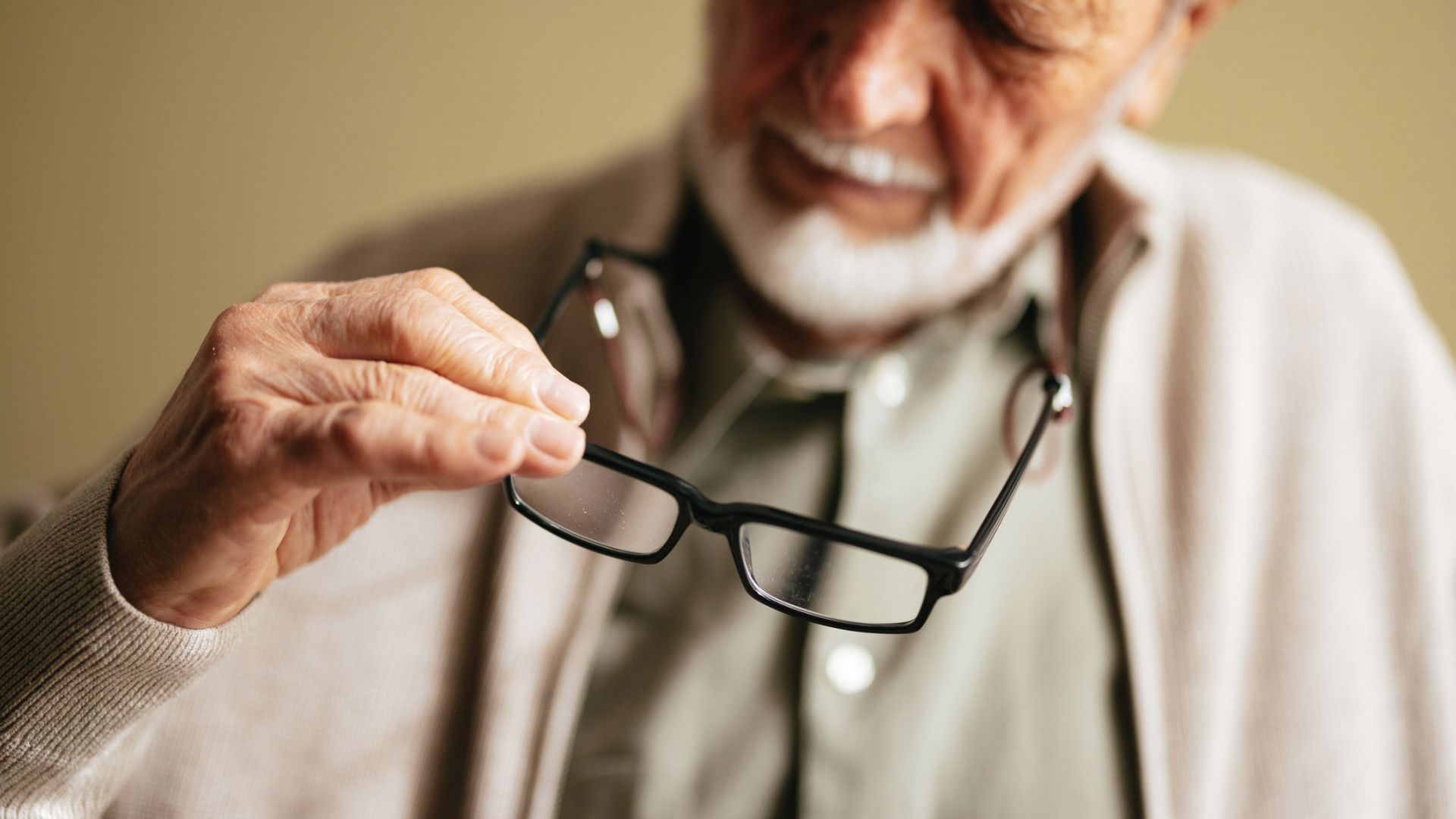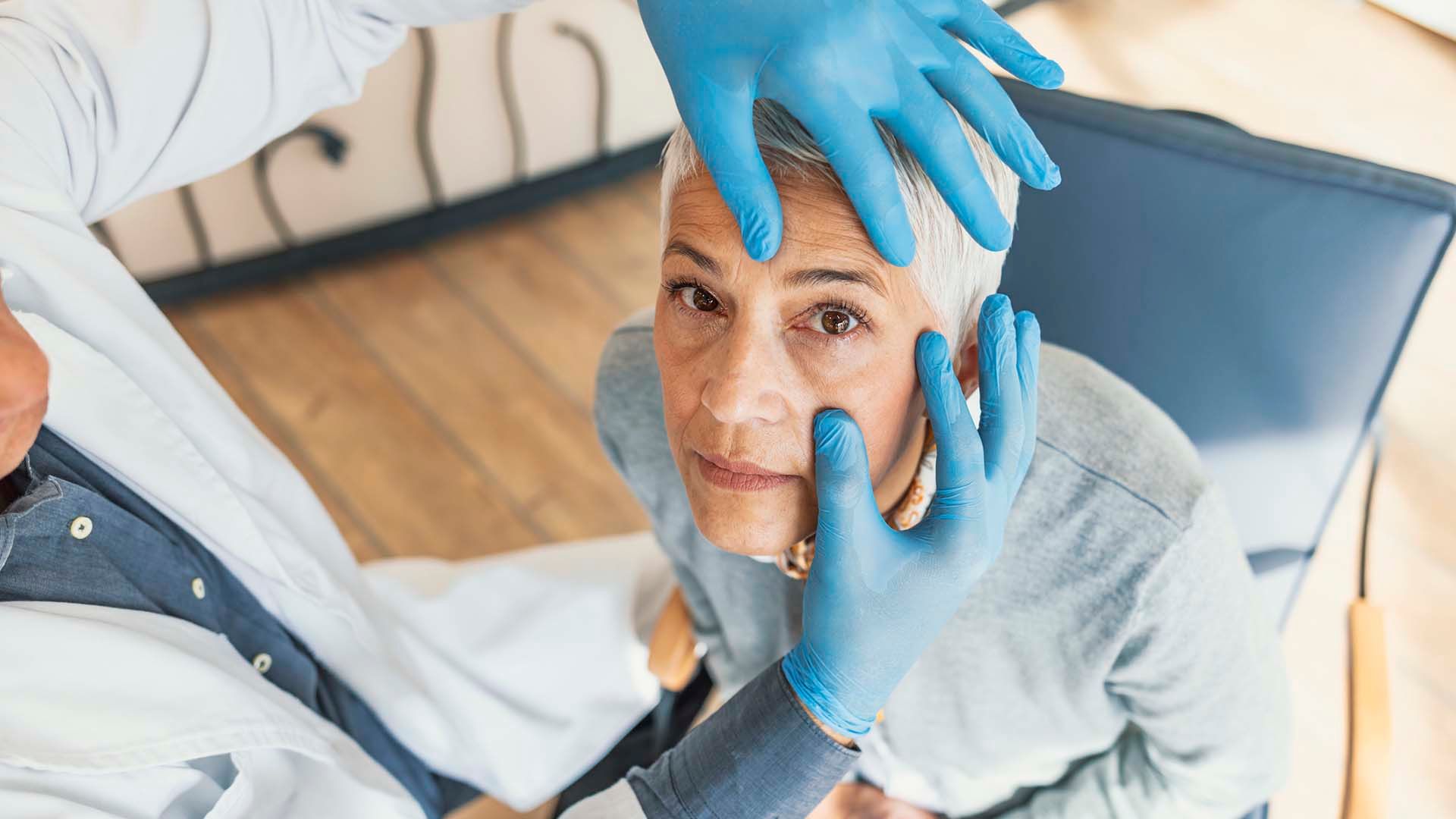Updated on March 28, 2024
Geographic atrophy is an advanced form of age-related macular degeneration (AMD). More specifically, it is the advanced form of dry age-related macular degeneration (dry AMD). The defining features of geographic atrophy are dead clusters of light-sensitive cells located in a part of the eye called the macula.
As with many health conditions, patient education plays an important role in the treatment of geographic atrophy. Patient education refers to the process of learning about a condition that affects you or a loved one—things like how and why the condition occurs, how the condition can be treated, what behaviors can improve treatment outcomes, and how to communicate your needs to healthcare providers.
With that in mind, here are some key terms to know to better understand AMD, geographic atrophy, and the process of treating these conditions.
Understanding the eye
Having a basic understanding of how eyes and vision work is helpful when understanding how geographic atrophy impacts the eyes.
- Photoreceptors. These are cells that convert light and images that enter the eyeball into nerve signals that can be processed by the brain. Photoreceptors allow the eye to distinguish colors and see in low-light settings (two things that can be affected by AMD).
- Retina. A layer of photoreceptors located in the back of the eyeball. Light and images that enter the eye are converted into nerve signals by the retina. These nerve signals then travel to the brain along the optic nerve.
- Macula. The central part of the retina, where there is a high concentration of photoreceptors. The macula enables clear central vision—the ability to see in detail objects that are directly in front of you.
- Fovea. This is the central part of the macula. Geographic atrophy lesions tend to begin outside the fovea and spread into the fovea as the condition progresses.
Understanding eye care providers and treatment
Treatment for geographic atrophy is typically overseen by an ophthalmologist. It may involve medications and low vision rehabilitation.
- Optometrist. An optometrist is the eye care professional who performs regular eye exams. This may be the first healthcare provider to recognize signs of AMD, or the first provider a person sees when they experience symptoms that affect eyes or vision.
- Ophthalmologist. An ophthalmologist is a medical doctor with specialized training in conditions that affect the eye. This is the provider a person will be referred to if they have geographic atrophy. Retina specialists are ophthalmologists that have further specialization in conditions that affect the retina.
- Complement inhibitor. The first therapies to be approved for geographic atrophy are drugs called complement inhibitors. These are drugs that are injected into the eye and suppress activity in the complement system (part of the immune system). Abnormal activity in the complement system has been linked to geographic atrophy. Complement inhibitors can slow the progression of geographic atrophy.
- Low vision rehabilitation. This is a personalized program that helps a person with a condition like geographic atrophy build strategies for maximizing the use of impaired vision. It can include making changes around the home, using assistive devices, and using assistive technology.
Understanding wet AMD
People who have geographic atrophy are at risk for another advanced form of AMD called wet AMD. Because people with geographic atrophy are at risk for developing wet AMD, a treatment plan may include strategies to prevent wet AMD.
- Neovascularization. This is the formation of new blood vessels in the eye, which is the defining characteristic of wet AMD. These new blood vessels form as the body attempts to supply the retina and macula with blood and oxygen. However, these blood vessels do not function well and leak blood and fluid into the eye.
- VEGF. Vascular endothelial growth factor, or VEGF, is a protein that promotes the growth of new blood vessels. The body needs VEGF to repair and maintain the structure of blood vessels. AMD can cause excess amounts of VEGF in the eye, leading to wet AMD.
- Anti-VEGF therapy. This is not a treatment for geographic atrophy but is a treatment for wet AMD. It involves medicines that are injected into the eyeball that block VEGF and slow or stop abnormal blood vessels from leaking.
- AREDS2 vitamin supplements. These are antioxidant supplements that may be prescribed to people with AMD. For people with geographic atrophy, these may be prescribed to prevent wet AMD.





